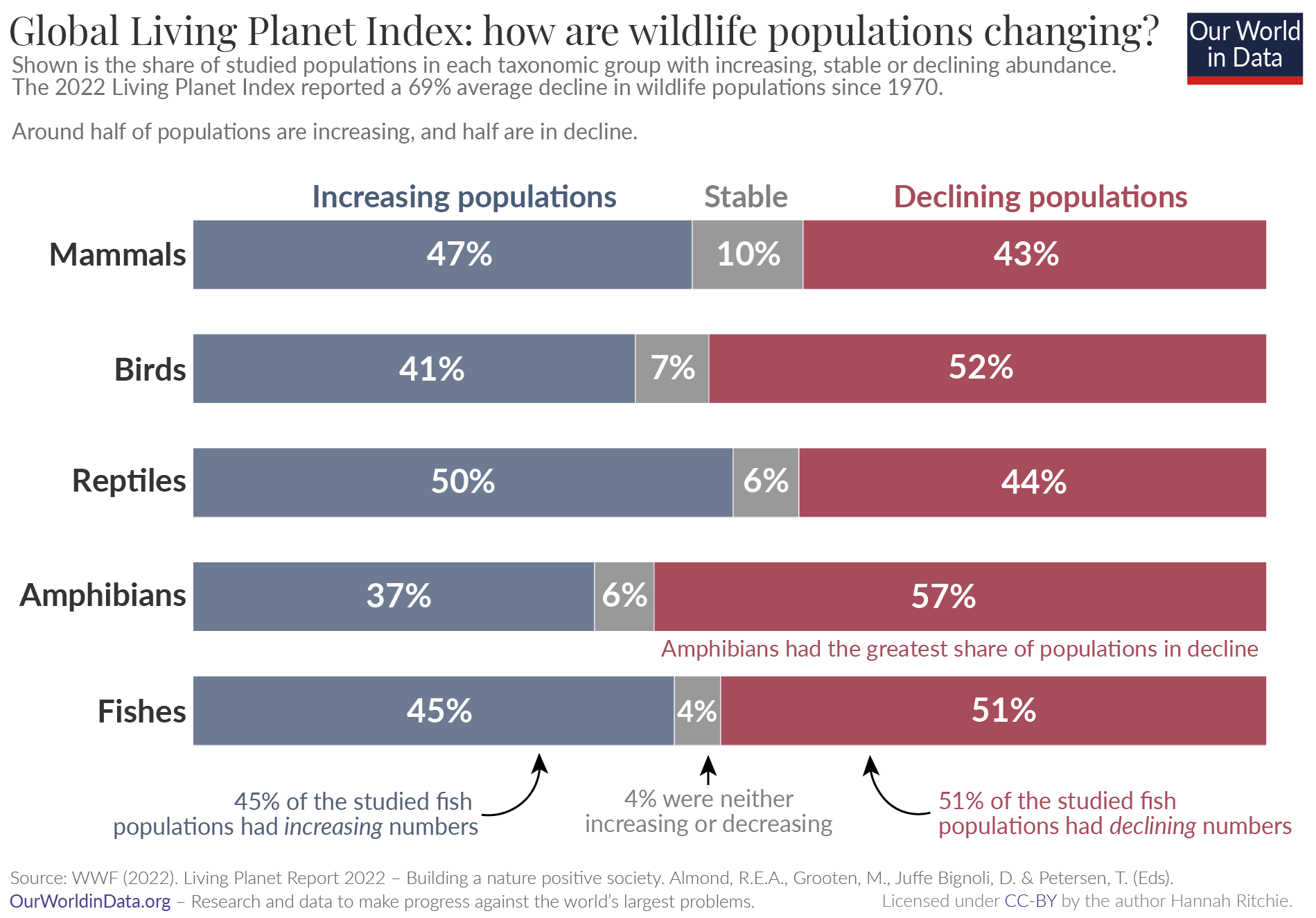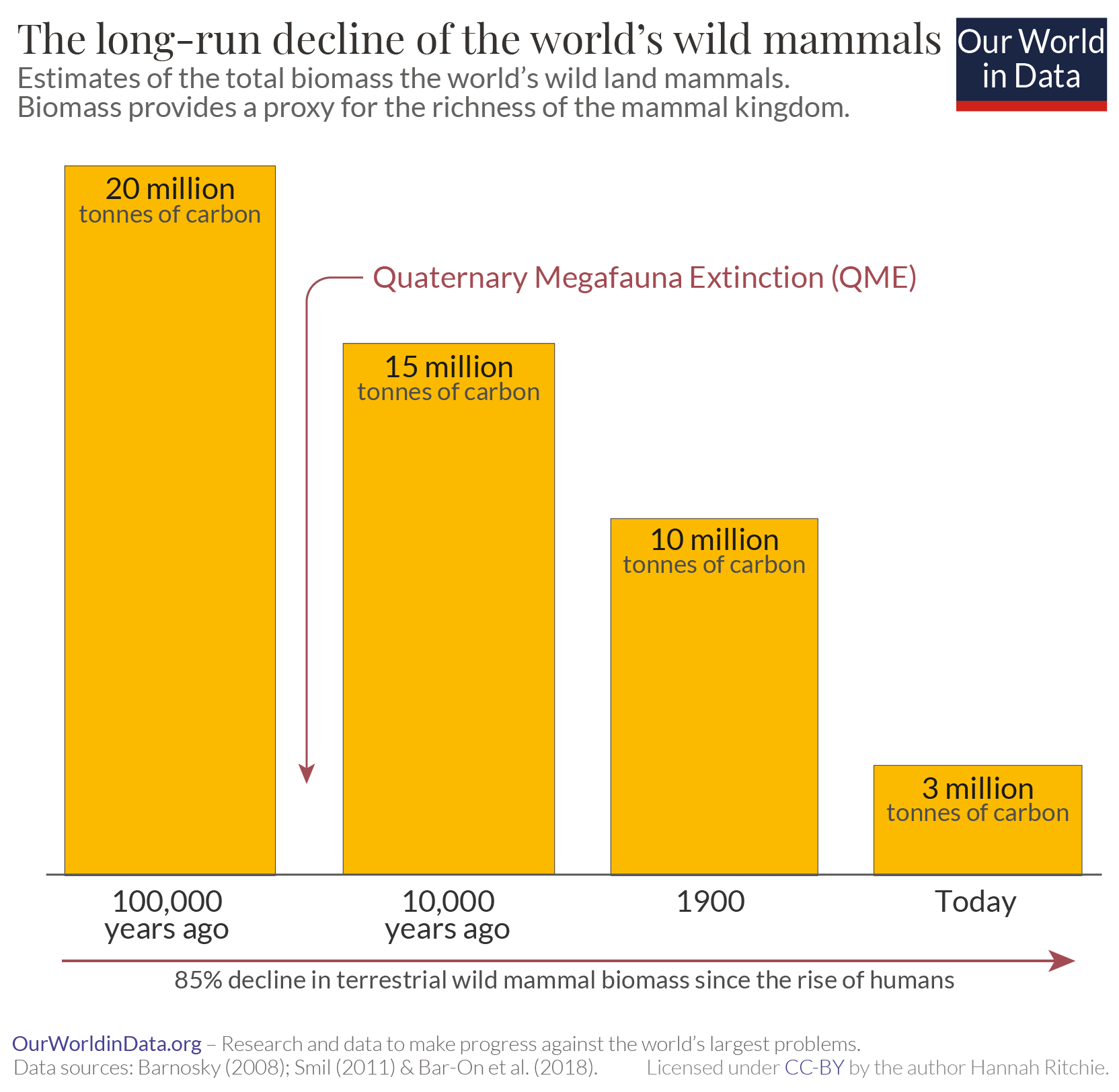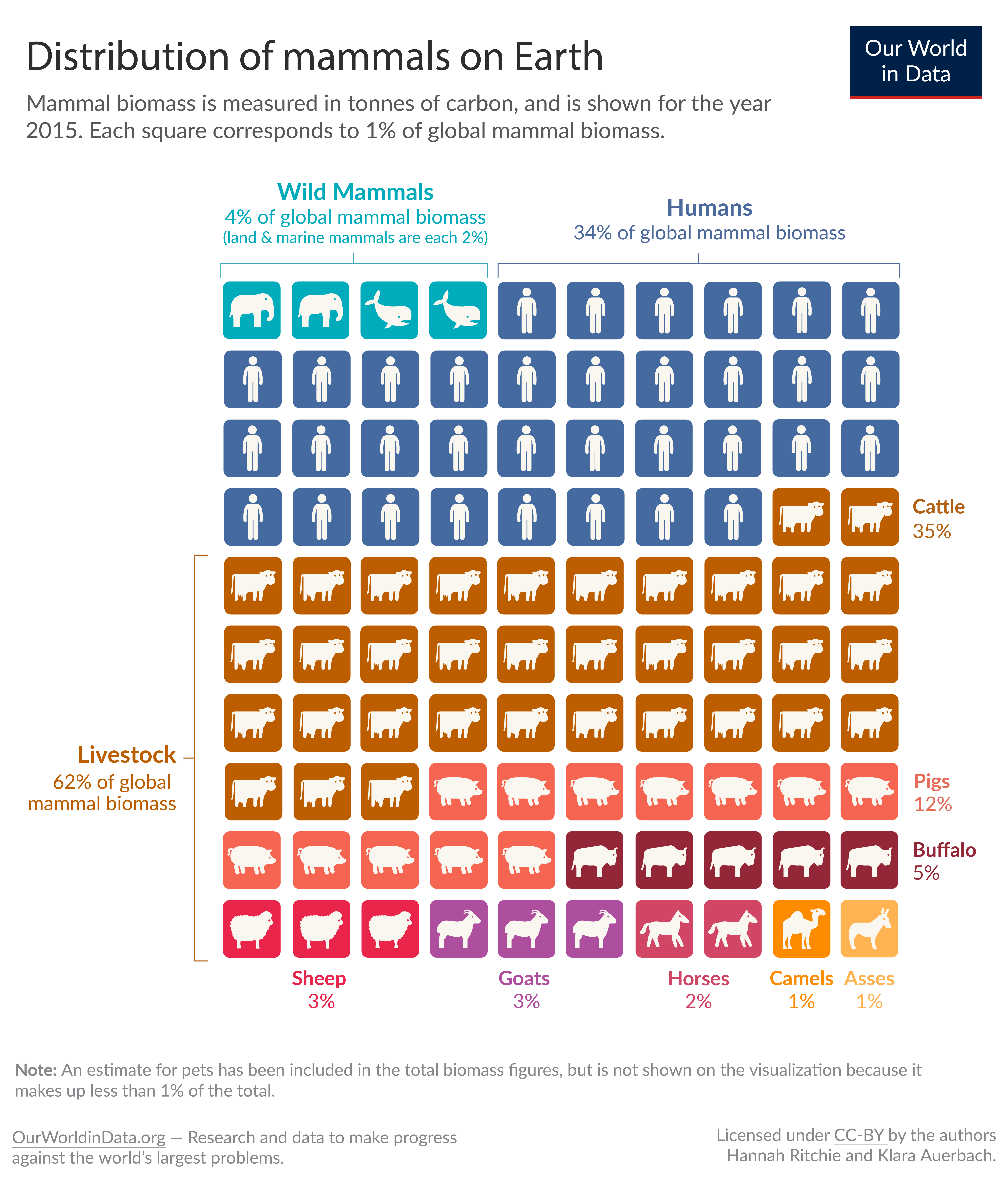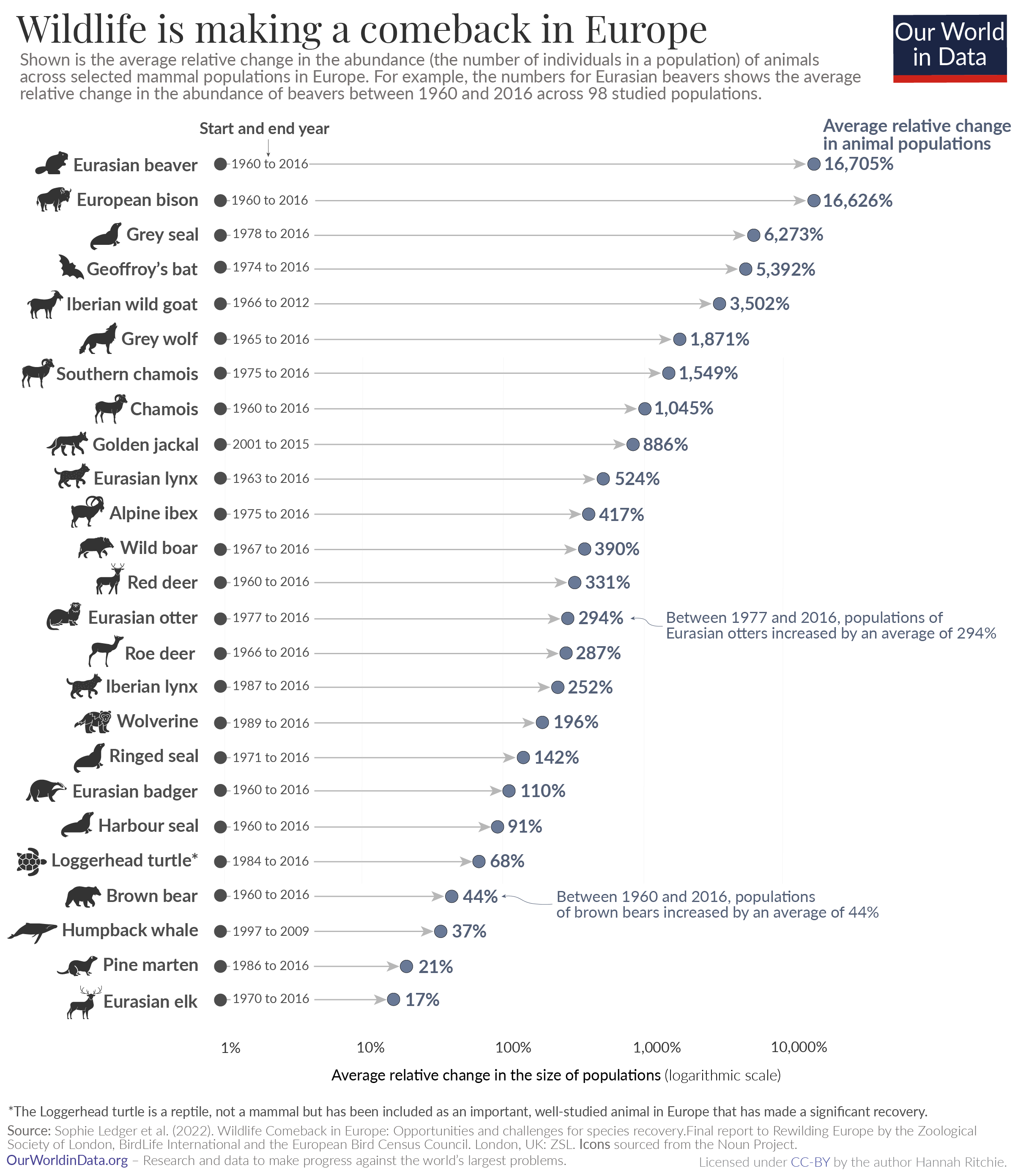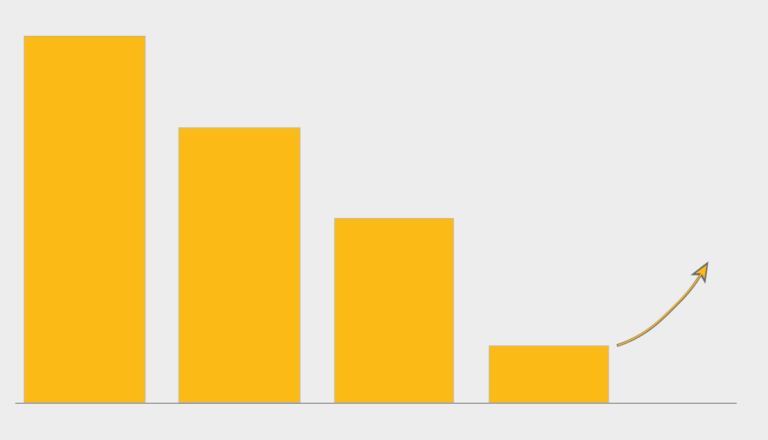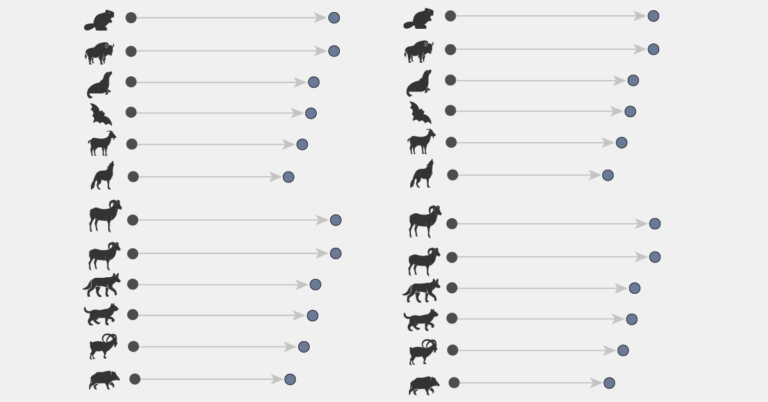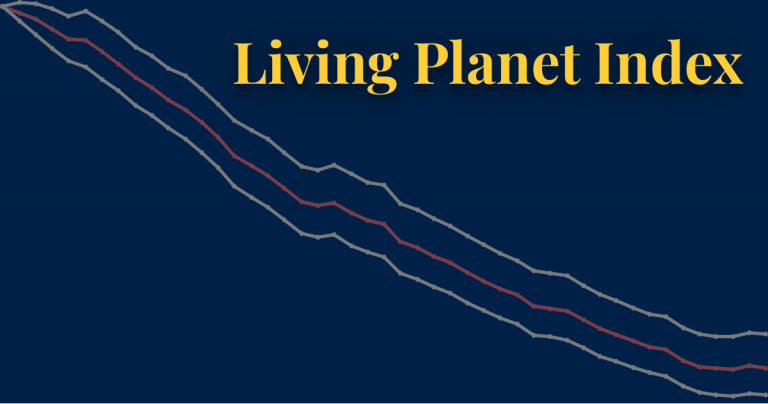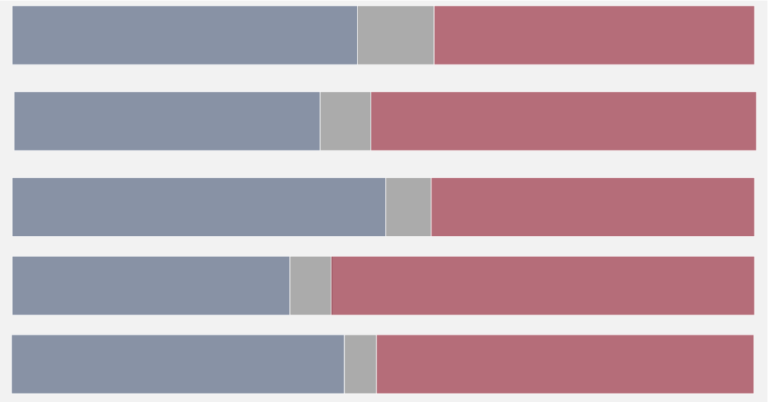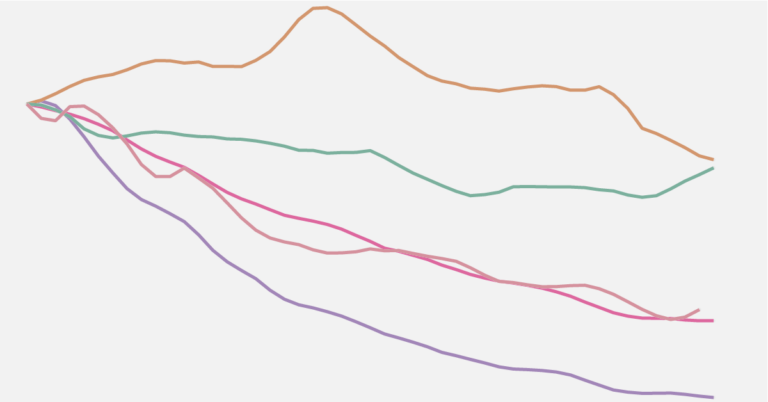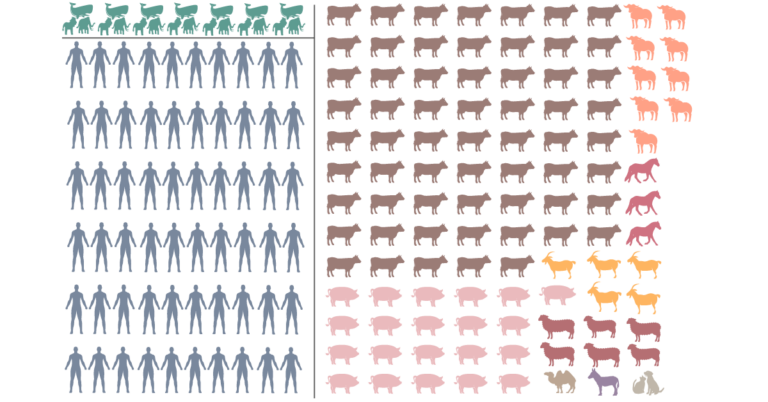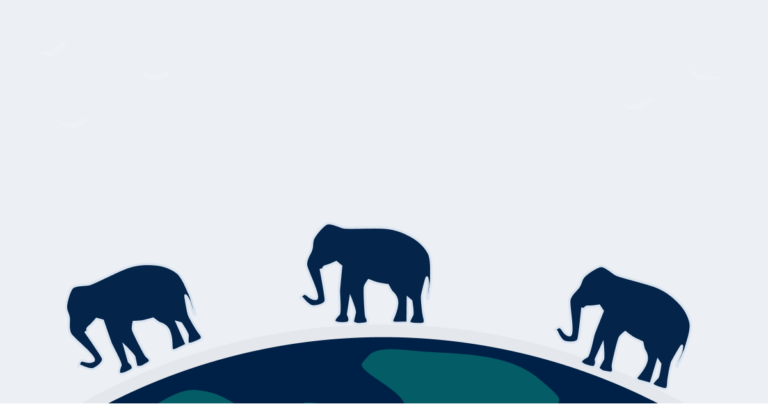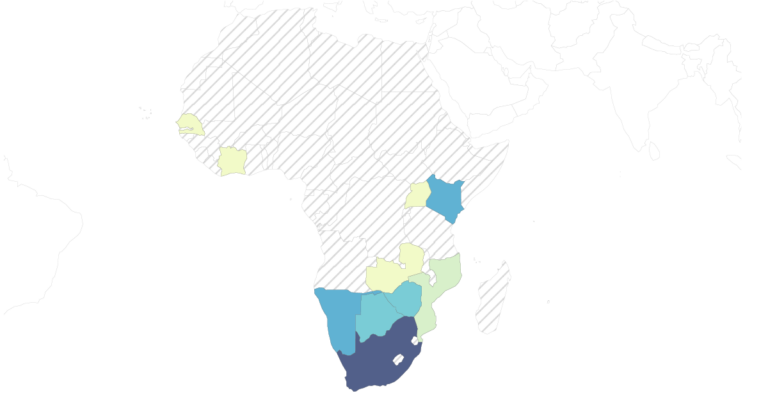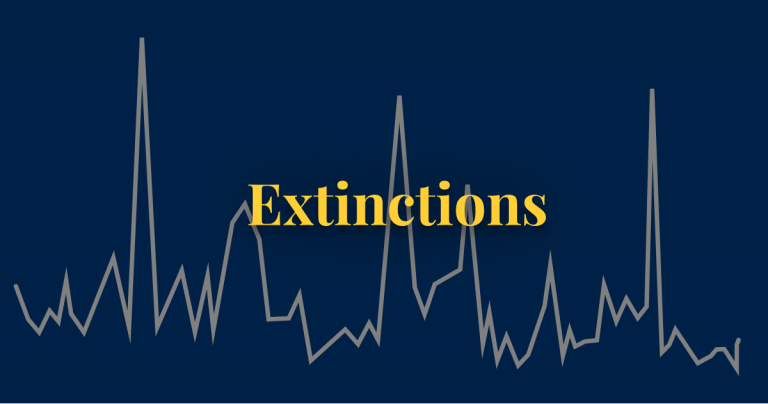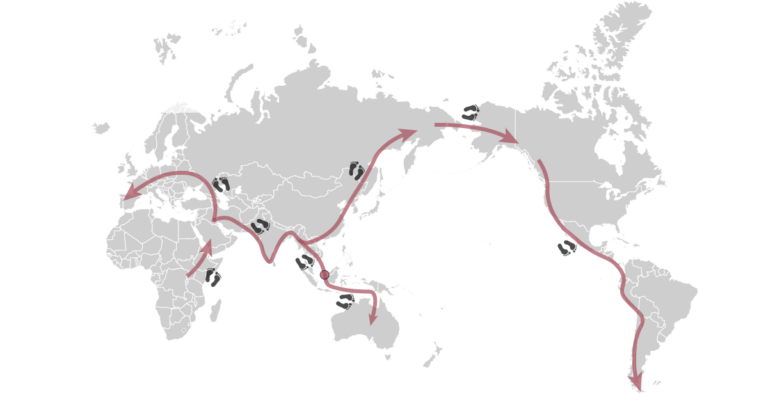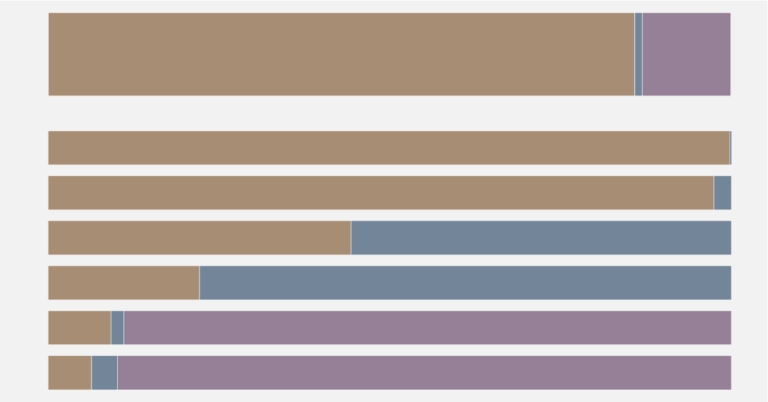Most of our work on Our World in Data focuses on data and research on human well-being and prosperity.
But we are just one of many species on Earth, and our demand for resources – land, water, food, and shelter – shapes the environment for other wildlife too.
For millennia, humans have been reshaping ecosystems, directly through competition and hunting of other animals, and indirectly through deforestation and land use changes for agriculture.
You can find all our data, visualizations, and writing related to biodiversity on this page. It aims to provide context on how biodiversity has changed in the past; the state of wildlife today; and how we can use this knowledge to build a future path where humans and other species can thrive on our shared planet.
Key insights on Biodiversity
Research & Writing
More Key articles on Biodiversity
The largest mammals have always been at the greatest risk of extinction – this is still the case today
Hannah Ritchie




